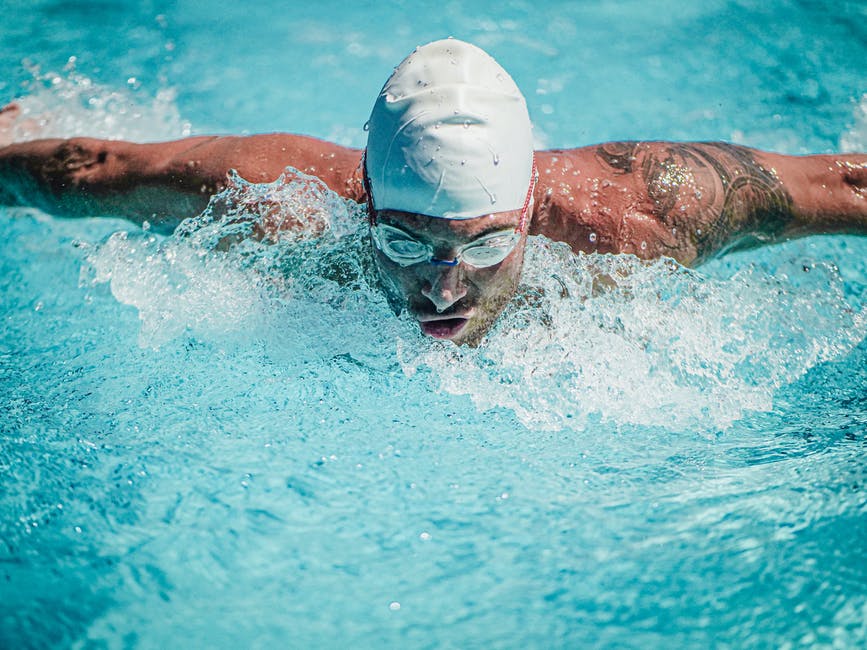Today, there are about 10.4 million residential pools in the United States. There are also about 309,000 public swimming pools.
If you’re new to swimming, then it might seem overwhelming to figure out the best swimming techniques. You’re in luck!
This article will take a look at a beginner’s guide to different swimming strokes. Read on to learn about these different swimming methods and make sure that you’re ready to go swimming today!
Why Learn To Swim?
First, homeowners in Katy TX love to swim since it’s a low-impact sport. This means that whether you have an injury or sensitivity, it’s a safe sport for many. It’s also a great way to stay safe and prevent drowning.
When you’re looking for a great workout for the entire family, swimming is a great option. Some studies show that swimming might help control your blood sugar and lower your blood pressure as well.
1. Breaststroke
Homeowners in Fulshear TX love to do a breaststroke. In order to do this swimming method, you’ll want to float with your face in the water. Stretch your toes while keeping your legs long.
Next, bend your knees and bring your feet toward your bottom. Bend at your ankles to have your feet point outward. Kick back and downward while snapping your feet together.
Have your thumbs pointed down with both of your hands pressing out. Next, turn your hands so that they’re pointed up and draw them together in a circular motion in front of your shoulders.
Stretch your arms out and return your head to the water. You’ll lift your head to breathe in when your arms come together.
2. Freestyle
Another term for freestyle is the front crawl which is popular with homeowners in Firethorne TX. First, lay on your stomach with your body parallel. Push yourself forward by using alternating arm movements in a circular motion. You’ll push them underwater and above water.
Use a flutter kick with your legs. In order to do this, you’ll have pointed feet as your legs move up and down. Don’t bend your legs at your knees.
Don’t turn your head too far since this can cause you to sink. Have your breathing match your strokes by turning your head to the side when your arm is above water.
3. Backstroke
In order to perform the backstroke, you’ll first need to float on your back. In this position, you’ll want to be sure that your knees don’t spread further apart than hip-width.
Bend at your knees in order to drop your heels, and keep them right below the surface. Have your toes pointing out, and your ankles fully flexed. Move your feet and lower legs in a whipping motion.
You want your feet to move out wider than your knees. They’ll act similarly to paddles in order to push the water behind you.
Kick with your legs so that your legs go straight and your feet touch. Keep your toes pointed and below the water’s surface.
4. Butterfly
The butterfly is a more difficult swimming stroke to learn. It’s a great workout since it uses various muscles throughout your body.
In order to do the butterfly stroke, you’ll want to be in a horizontal prone position. Use wave-like movements where your chest and hips move. You’re bobbing up and down in this movement.
Start in a streamlined position underwater. Have your hands make an hourglass shape under the water. In order to extend that position, you’ll need to circle forward above the water’s surface.
Your feet and legs stay together, toes are pointed, and push up and down. In order to breathe, you’ll lift your head out of the water when your arms are in recovery mode outside of the water.
5. Sidestroke
If you’re looking for a good long-distance stroke, choose a sidestroke. You’ll use a scissor kick for this position where you’ll rest between arm strokes.
First, bring your knees together and bend them when you bring your lower legs and heels toward your bottom. Move your top leg forward and your bottom leg back. The goal is to have your knees and legs straight.
Bring both of your legs back together with a snapping motion similar to closing scissors. Keep your legs together during the gliding position.
On your side, have your one ear in the water. First, straighten your bottom arm to its full length with your palm down. Your top arm needs to rest alongside your body with your hand above your thigh.
Keep your top arm vertical with your thumb on top. Move the top arm into a catch position by moving the hand in a downward position toward your feet.
You’ll want to move your leading arm until it reaches the middle of your chest. Both hands reach the upper chest at the same time. Use your hand and arm to push the water toward your feet.
Exploring the Basic Swimming Strokes
After exploring this guide, you should have a better idea of how to perform the basic swimming strokes. Take your time learning the different swimming strokes to be more comfortable in the water.
Are you ready to get started on exercising more and turning your backyard into an oasis? Escape the Texan heat!
Contact us today. We have a variety of custom swimming pools for you to choose from. Get your free consultation today and have all of your questions answered by our knowledgeable team.




